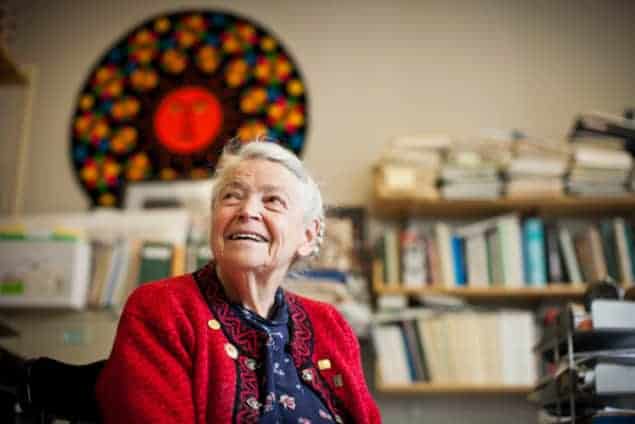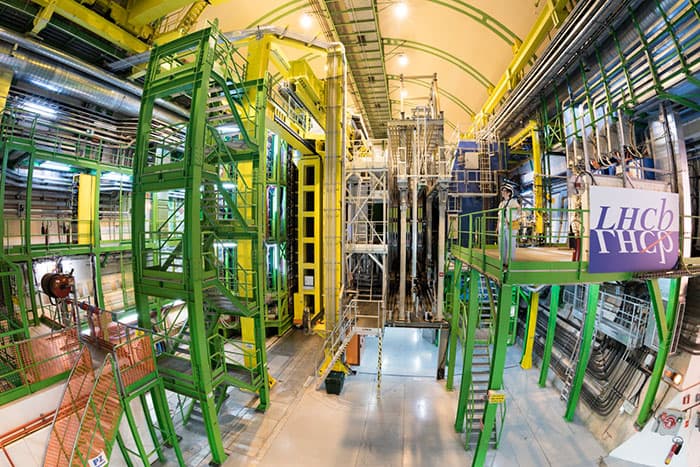Flash Physics is our daily pick of the latest need-to-know developments from the global physics community selected by Physics World‘s team of editors and reporters

“Queen of Carbon” Mildred Dresselhaus dies
The solid-state physicist Mildred Dresselhaus from the Massachusetts Institute of Technology (MIT) has died at the age of 86. Dresselhaus was born in 1930 in New York City and completed a bachelor degree in physics from Hunter College in New York in 1951. Following an MA from Radcliffe College in 1953, Dresselhaus was awarded a PhD in physics in 1958 from the University of Chicago, where she studied under the Nobel laureate Enrico Fermi. After a couple of years at Cornell University, she headed to MIT in 1960 where she remained for the rest of her career. Known as the “Queen of Carbon”, Dresselhaus made fundamental discoveries in solid-state physics, in particular studying the electronic structure of materials, including carbon, and was noted for her work on graphite, graphite intercalation compounds, fullerenes and carbon nanotubes. In 1985, she was the first woman to become a full-tenured professor at MIT, and Dresselhaus continued to promote gender equality in science and engineering throughout her career, co-organizing the first Women’s Forum at MIT in 1971. Dresselhaus won many awards including the National Medal of Science in 1990 and the Presidential Medal of Freedom in 2014 – the highest award bestowed by the US government on US civilians. In 2014, Dresselhaus spoke to Physics World about her career in science.
LHCb observes rare B-meson decay

The rare decay of a neutral B meson to two oppositely charged kaons has been observed for the first time by physicists working on the LHCb experiment at CERN. B mesons are created when protons collide in the Large Hadron Collider and the observed decay happens to fewer than one in 10 million B mesons. This is the rarest decay ever observed that involves just hadrons. Particle physicists study the decays of heavy-quark hadrons such as B mesons because these events could reveal new particles and interactions that are not described in the Standard Model of particle physics. In this case, however, the decay appears to proceed as predicted by several different schemes for performing quantum chromodynamics (QCD) calculations. The decay was measured with a statistical significance greater than 5σ and is reported in Physical Review Letters. In the same paper, the LHCb team also reports observing the decay of a strange B meson to two oppositely charged pions. This measurement differs somewhat from that predicted by some QCD calculations.
Mobile antineutrino detector could monitor nuclear reactors

An 80 kg antineutrino detector called MiniCHANDLER will hit the road in April, when it will become the world’s second mobile antineutrino detector, after a similar device was unveiled in Japan in 2014. Built by Jon Link and colleagues at Virginia Tech in the US, The detector uses a solid scintillator that allows it to detect about 100 antineutrinos per day. Antineutrinos are discriminated from much more common background radiation by looking for both the proton and neutron that are produced when an antineutrino interacts with an atom in the detector. MiniCHANDLER is deployed in a trailer that could be parked next to a nuclear facility, where it would monitor the huge flux of antineutrinos created by nuclear fission within the reactor. Such measurements could, in principle, be used to determine what type of nuclear fuel is being used. This information could be used to ensure that a reactor is not being used clandestinely to create weapons-grade material. If MiniCHANDLER is successful, the team plans to build much larger portable neutrino detectors that could weigh as much as 1 tonne.
- You can find all our daily Flash Physics posts in the website’s news section, as well as on Twitter and Facebook using #FlashPhysics. Tune in to physicsworld.com later today to read today’s extensive news story on exoplanets.



